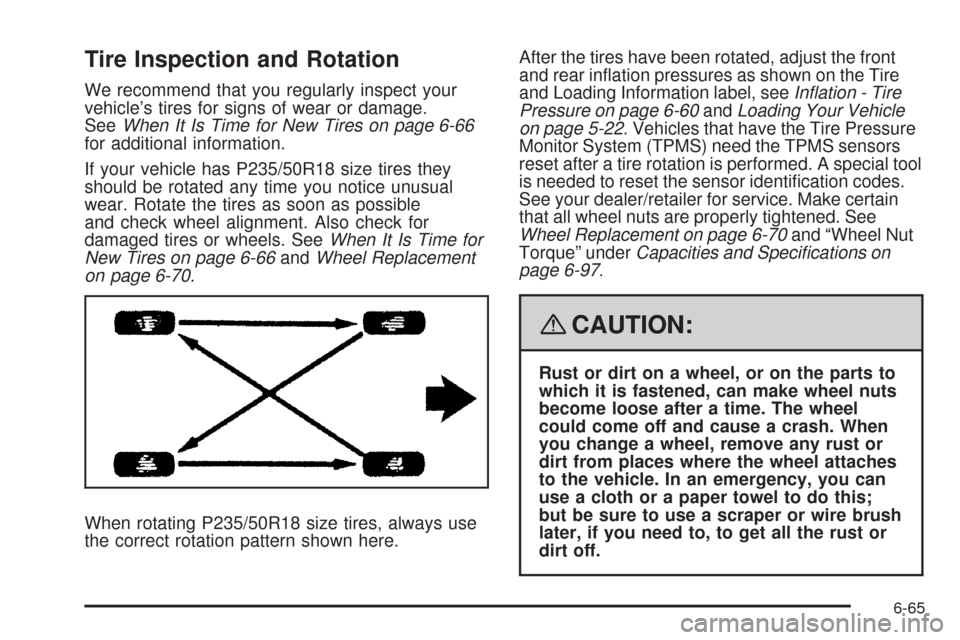Tire Inspection and Rotation
We recommend that you regularly inspect your
vehicle’s tires for signs of wear or damage.
SeeWhen It Is Time for New Tires on page 6-66
for additional information.
If your vehicle has P235/50R18 size tires they
should be rotated any time you notice unusual
wear. Rotate the tires as soon as possible
and check wheel alignment. Also check for
damaged tires or wheels. SeeWhen It Is Time for
New Tires on page 6-66andWheel Replacement
on page 6-70.
When rotating P235/50R18 size tires, always use
the correct rotation pattern shown here.After the tires have been rotated, adjust the front
and rear in�ation pressures as shown on the Tire
and Loading Information label, seeInflation - Tire
Pressure on page 6-60andLoading Your Vehicle
on page 5-22. Vehicles that have the Tire Pressure
Monitor System (TPMS) need the TPMS sensors
reset after a tire rotation is performed. A special tool
is needed to reset the sensor identi�cation codes.
See your dealer/retailer for service. Make certain
that all wheel nuts are properly tightened. See
Wheel Replacement on page 6-70and “Wheel Nut
Torque” underCapacities and Specifications on
page 6-97
.
{CAUTION:
Rust or dirt on a wheel, or on the parts to
which it is fastened, can make wheel nuts
become loose after a time. The wheel
could come off and cause a crash. When
you change a wheel, remove any rust or
dirt from places where the wheel attaches
to the vehicle. In an emergency, you can
use a cloth or a paper towel to do this;
but be sure to use a scraper or wire brush
later, if you need to, to get all the rust or
dirt off.
6-65
